Silicone Rubber molding
GPMFG provide efficient, reliable, and high-quality silicone rubber molding solutions for your products.From Tooling/Molds design,manufacturing to molding productiong.
- Products/Parts Analysis & Optimizing
- Tooling/Molds Development & Manufacturing
- Compression Molding of Solid Silicone Rubber
- Injection Molding of liquid Silicone Rubber
- Insert Molding of Silicone Rubber
- Overmolding of Silicone Rubber
- Diverse Post processes available
Silicone Rubber molding Supplier - reducing trial and error costs
GPMFG has over 10 years of experience manufacturing custom silicone rubber parts and produces 7,000,000+ silicone rubber parts per year for Europe and the United States. We offer high quality medical grade silicone materials with hardness ranging from 5A to 85A.
- Minimum order of 1 - 100K+ parts
- Get silicone parts within 5 days
- Get a quick quote in less than 12 hours
- Complex elastomer parts & high level of detail
Custom Molded Silicone & Rubber Parts - Injection & Compression Molding
Rapid silicone rubber prototyping. High- or low-volume compression & injection molding part production.
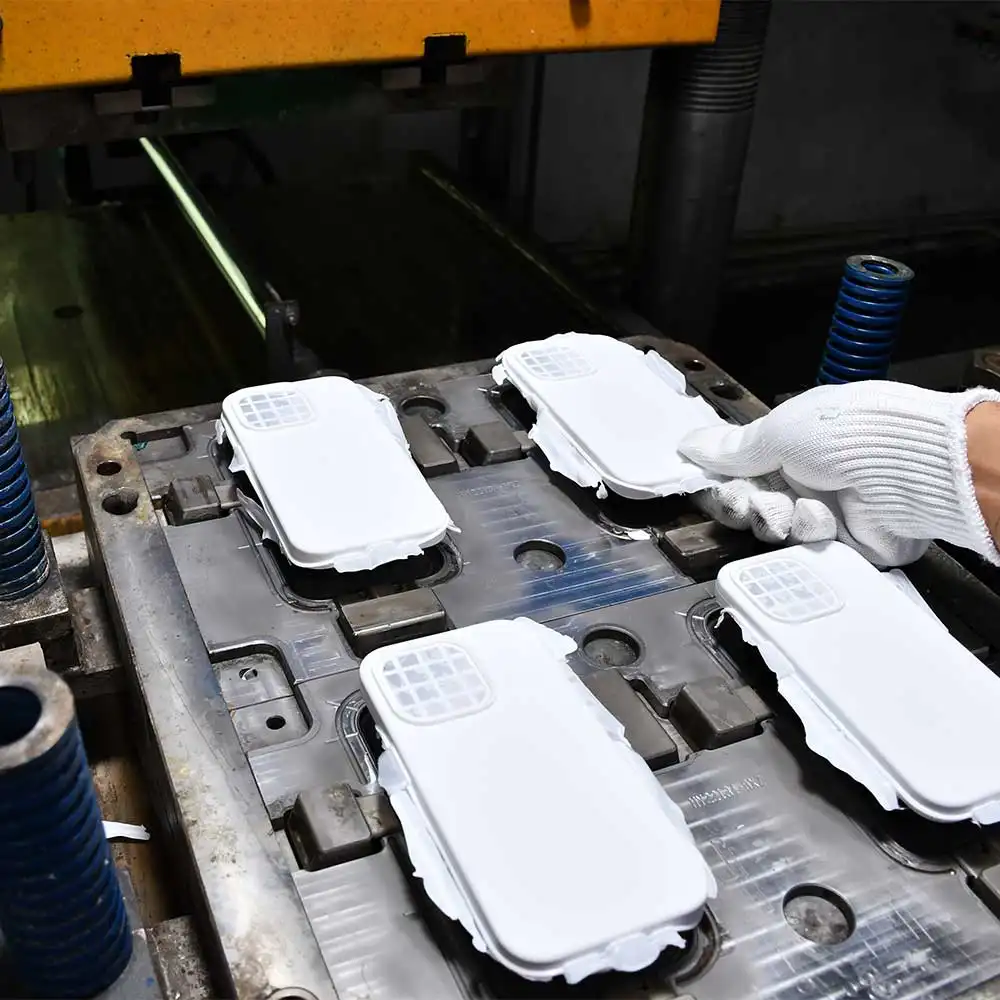
Silicone rubber compression molding
Silicone rubber compression molding uses uncured rubber that has been preformed into a controlled shape, such as a disc. The mold surrounds the part and compresses it between two plates under high pressure. The high temperature and pressure vulcanize the rubber to cure the part. Pins automatically eject the part from the mold, speeding up production. Silicone rubber compression molding offers excellent chemical resistance, durability and flexibility, and also allows the use of multiple colors, textures and durometers in a single product, providing designers and engineers with greater product design flexibility.
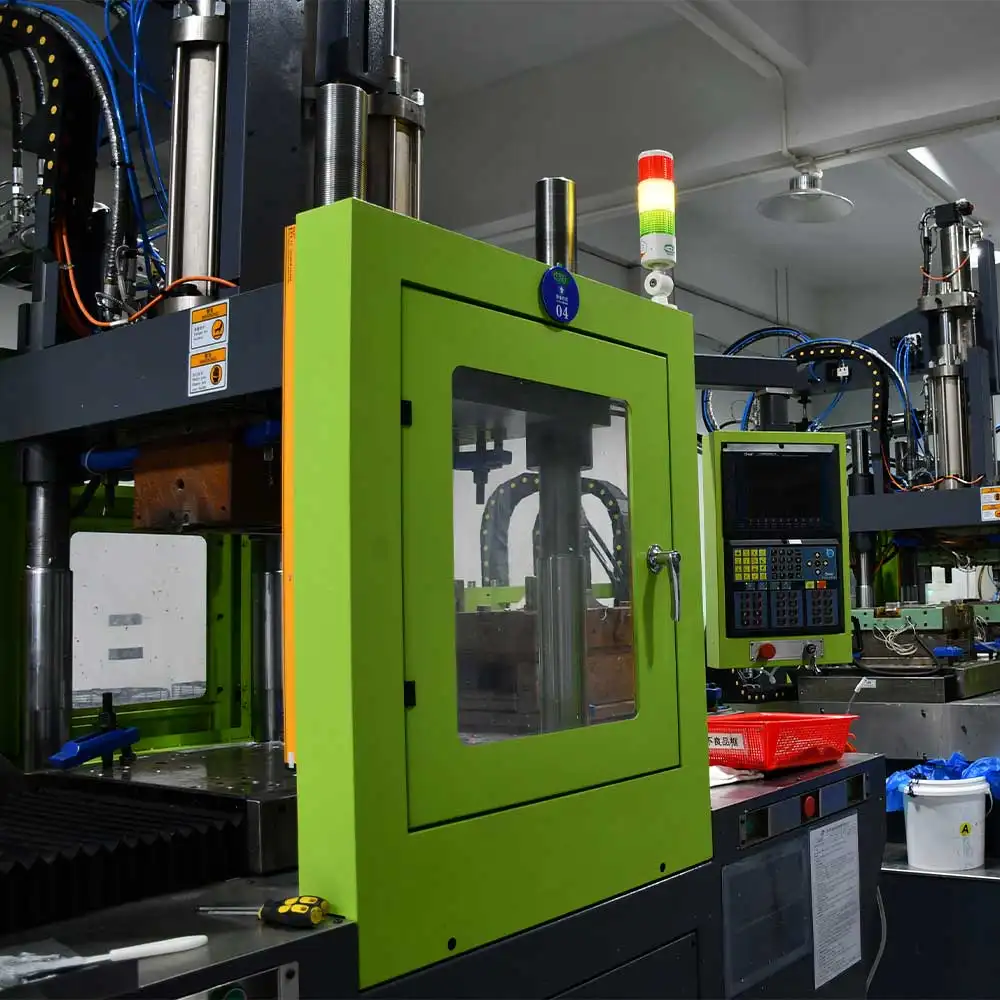
Silicone rubber Injection molding
Silicone rubber injection molding is to inject liquid silicone rubber into the mold cavity under high pressure and high temperature. The silicone rubber then cures and cures to form the finished product. Liquid silicone rubber can flow into tight spaces and accurately reproduce fine features. In addition, silicone rubber has excellent heat resistance, electrical insulation, and biocompatibility.
Silicone rubber compression molding process & characteristics
Silicone rubber compression molding is a manufacturing process used to create silicone rubber products, such as seals, gaskets, and o-rings. This method is known for producing high-quality, high-precision parts with consistent dimensions and excellent surface finish. It also allows for customization of the rubber’s properties, such as hardness and color.
Compression Molding
The equipment and tools required for the compression molding are much simpler, which means less capital investment. The form of molding is suitable for mass and rapid production of products with simple design, product tolerance of ±0.05mm, and low budget.
Silicone compression molding is a manufacturing process used to produce high-quality silicone rubber products. Here are the basic steps involved in the process:
How it Word
Preparing the silicone material: The silicone is typically in the form of a compound or a mixture of silicone polymer, fillers, and other additives. The compound is typically mixed in a high-speed mixer or a two-roll mill until it is uniform.
Preparing the mold: The next step is to prepare the mold. The mold is typically made of steel or aluminum and is designed to the shape of the final product. The mold is usually made in two halves, which are held together using a clamp.
Loading the mold: Once the mold is prepared, the silicone material is loaded into the mold. The mold is filled with the silicone compound using a hydraulic press or an injection molding machine. The amount of material loaded into the mold is critical to ensure the final product meets the desired specifications.
Compression and curing: Once the mold is filled, the two halves of the mold are clamped together, and the silicone material is compressed to the desired shape. The mold is then heated to a specific temperature, typically between 150°C to 200°C, to cure the silicone material. The curing time varies depending on the thickness of the final product and the type of silicone used.
Demolding: Once the silicone material is cured, the mold is opened, and the final product is removed. The excess material is trimmed, and the final product is inspected to ensure it meets the desired specifications.
Advantages
- Low mold cost
- Low price of raw materials
- Low price of products
- High precision and tight tolerances
- Creating porous products
Disadvantages
- Limited material selection
- Long cycle times
- Limited automation
- Limited part size
Single Molding
Only a single variety of silicone is utilized in the production of silicone items in this molding process.
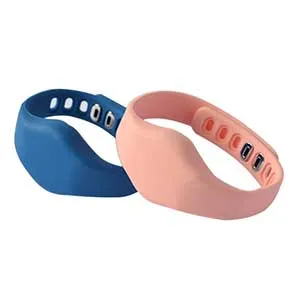
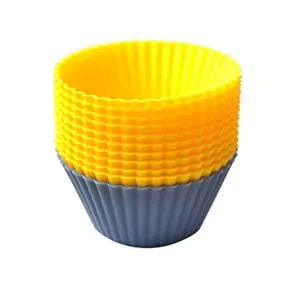


Overmold Products
The seamless integration of silicone rubber with various materials, including metal, plastic, and others, into a single part or product is achieved through a molding process.
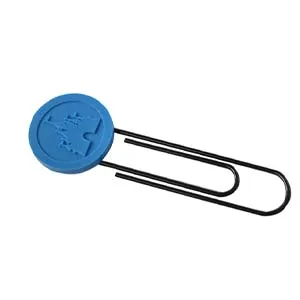



Silicone rubber Injection molding process & characteristics
Silicone rubber injection molding offers several advantages over other molding processes, such as high precision, low waste, and the ability to mold complex geometries. Silicone rubber is known for its excellent thermal stability, chemical resistance, and biocompatibility, making it ideal for use in a variety of industries, including medical, automotive, and electronics.
Liquid Silicone Molding
The LSR molding is suitable for the production of silicone components with complex shapes, high precision, micro overmolding, and strict hygienic requirements. The tolerance of the product can meet ± 0.02mm, have no vulcanization residue
How it Word
Silicone rubber injection molding is a process that involves material preparation, mold creation and preparation, injection, vulcanization, de-molding, inspection, and packaging. It is a versatile and efficient manufacturing method used in a variety of industries to create a range of products.
Mold Creation:
A metal mold is created to the desired shape of the final product.
Mold Preparation:
The mold is cleaned and coated with a release agent to prevent the silicone from sticking to it.
Injection Process:
The silicone compound is injected into the mold through a sprue using a hydraulic press.
Vulcanization:
The mold is heated to cure the silicone and create the final product.
De-molding:
The product is removed from the mold and excess material is trimmed off.
Inspection:
The product is inspected for any defects or imperfections.
Packaging:
The product is packaged and prepared for shipping.
Advantages
- High precision
- Consistent quality
- Wide range of hardness
- Complex geometries part
- Tight tolerances
Disadvantages
- High initial cost
- Limited Overmolding Options
- Potential Flashing
Single-Shot Molding
Only a single variety of silicone is utilized in the production of silicone items in this molding process.

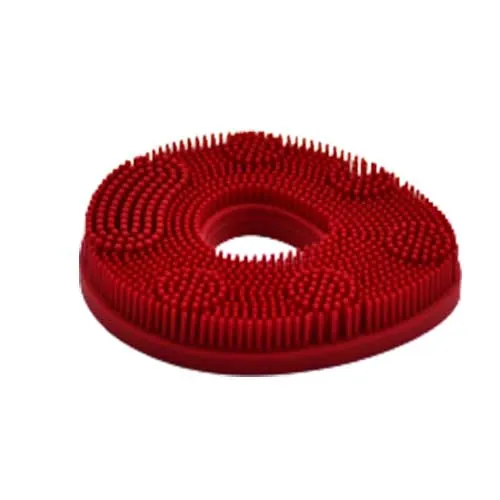
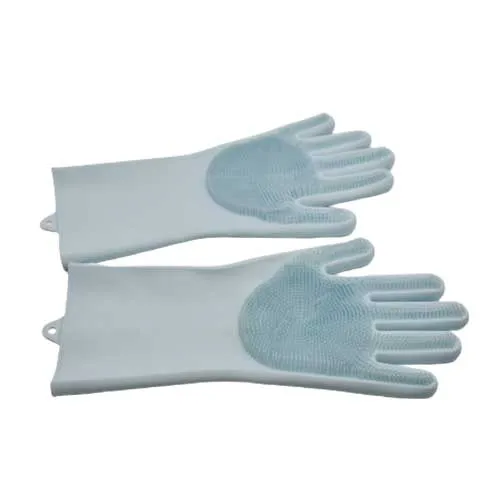
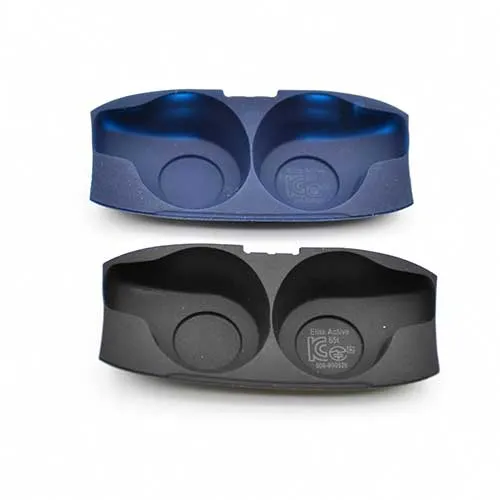
Overmold Products
The seamless integration of silicone rubber with various materials, including metal, plastic, and others, into a single part or product is achieved through a molding process.

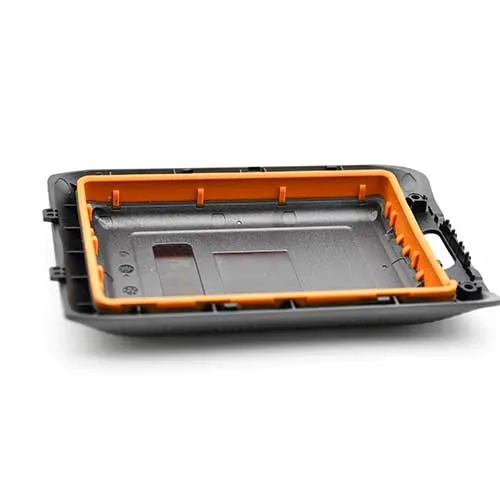
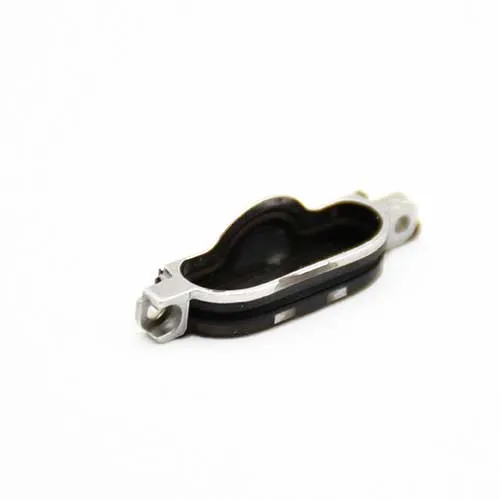
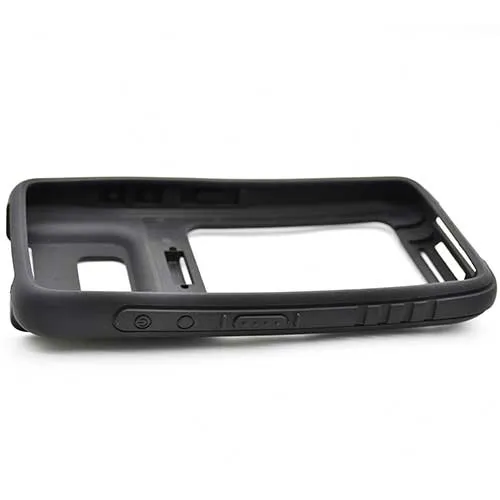
Our exquisite Silicone & Rubber Molding capabilities
Our Silicone & Rubber Molding capabilities are exceptional and unmatched in the industry. Our precision molding techniques and attention to detail result in durable, long-lasting products.
|
Material
|
Solid silicone rubber
|
|---|---|
|
Process
|
Compression Molding
|
|
Environmental safety
|
Environmental Class
|
|
Application
|
Electronics and Electrical Industry,etc
|
|
Product Tolerance
|
Tightest ±0.05 mm,Recommend ±0.1 mm
|
|
Product Thickness
|
Avarage 3.0 mm,Min. 0.4 mm,Max. 15-20 mm and 30mm for ball
|
|
Assembly Gap
|
0.2-0.5 mm
|
|
Shrinkage
|
1.03
|
|
Cutting Method
|
Tear Lines Made In Mold
Pull Off Flash Material |
|
Temperature Range
|
Operating Temperature: -30° C to +180° C
Storage Temperature: -42° C to 250° Cs |
|
Material
|
Liquid silicone rubber
|
|---|---|
|
Process
|
Injection Molding
|
|
Environmental safety
|
Food Class
|
|
Application
|
Food and Medical industries
|
|
Product Tolerance
|
Tightest ±0.05 mm
Recommend ±0.1 mm |
|
Product Thickness
|
Avarage 3.0 mm,Min. 0.4 mm,Max. 15-20 mm and 30mm for ball
|
|
Cutting Method
|
Tear Lines Made In Mold
Pull Off Flash Material |
|
Temperature Range
|
Operating Temperature: -30° C to +180° C
Storage Temperature: -42° C to 250° Cs |
what makes us different
Silicone Rubber Molding From Concept to Creation
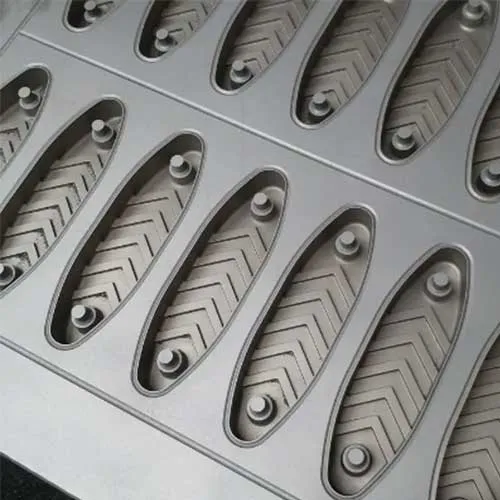
Design & Prototype Service
With a focus on delivering exceptional value to our clients, we leverage our extensive experience and cutting-edge technology to provide comprehensive injection molding solutions that offer exceptional accuracy and repeatability, while remaining affordable and accessible to businesses of all sizes.
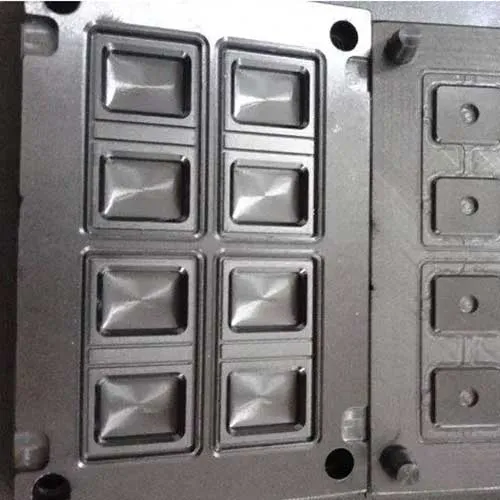
Mold tooling Design and make
We prioritize a holistic approach when creating Silicone Rubber molds, which involves close collaboration with our customers to ensure their unique specifications and requirements are met. Our plastic medical consumable supplies are known for their exceptional consistency, precision, and overall quality.
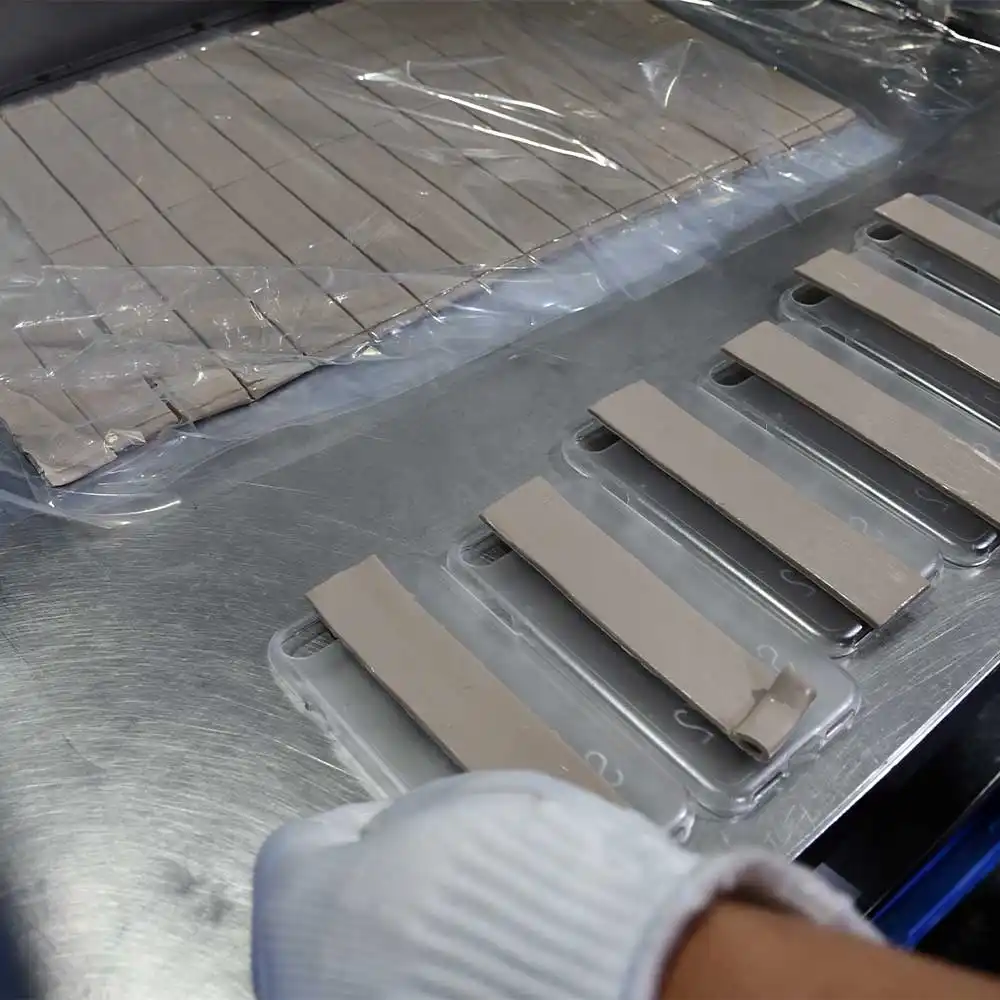
Rigorous Material Selection
Our innovative separation technology helps to increase your product yield by eliminating impurities and improving the efficiency of the separation process. The separation columns and resins utilized in our process minimize the number of purification steps, resulting in more efficient bioprocessing applications.
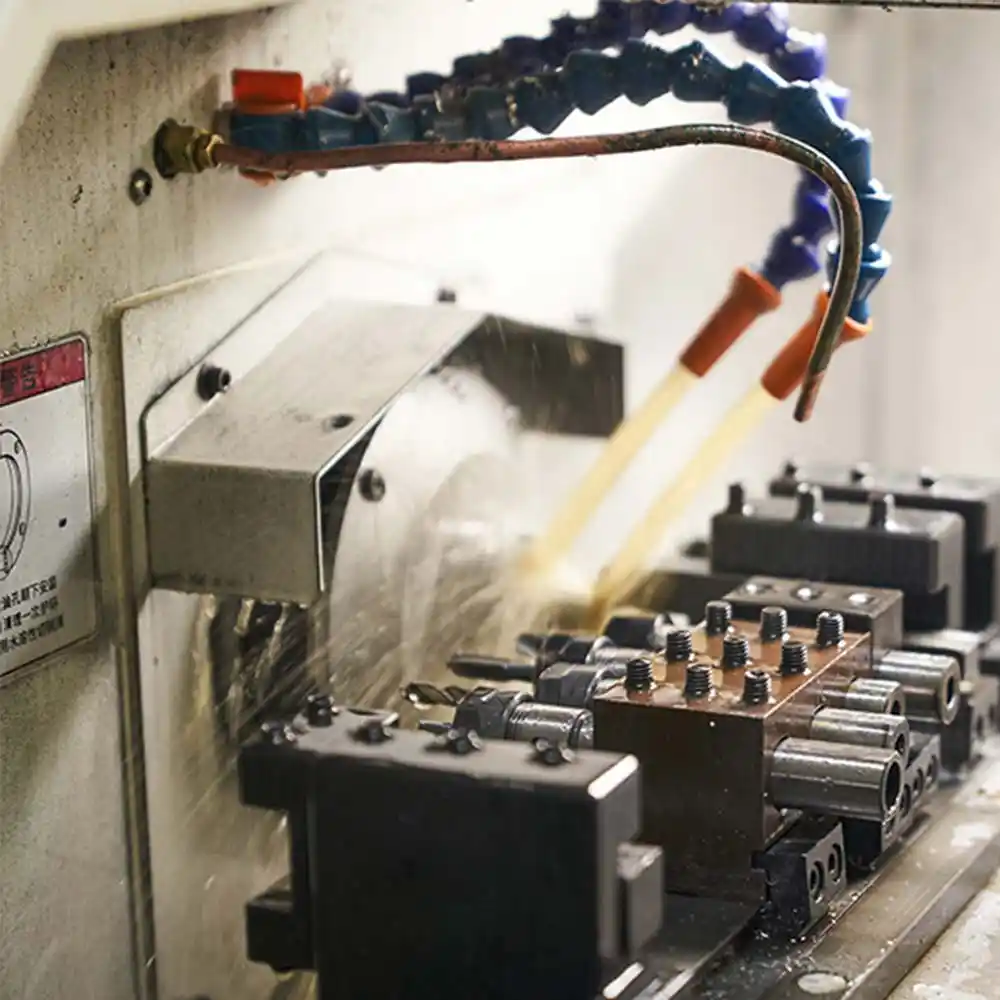
CNC machining
In our precision engineering process, we employ advanced laser cutting technology to produce intricate metal parts with unparalleled accuracy and speed. This automated manufacturing technology allows us to create complex designs that are crucial to many industries.
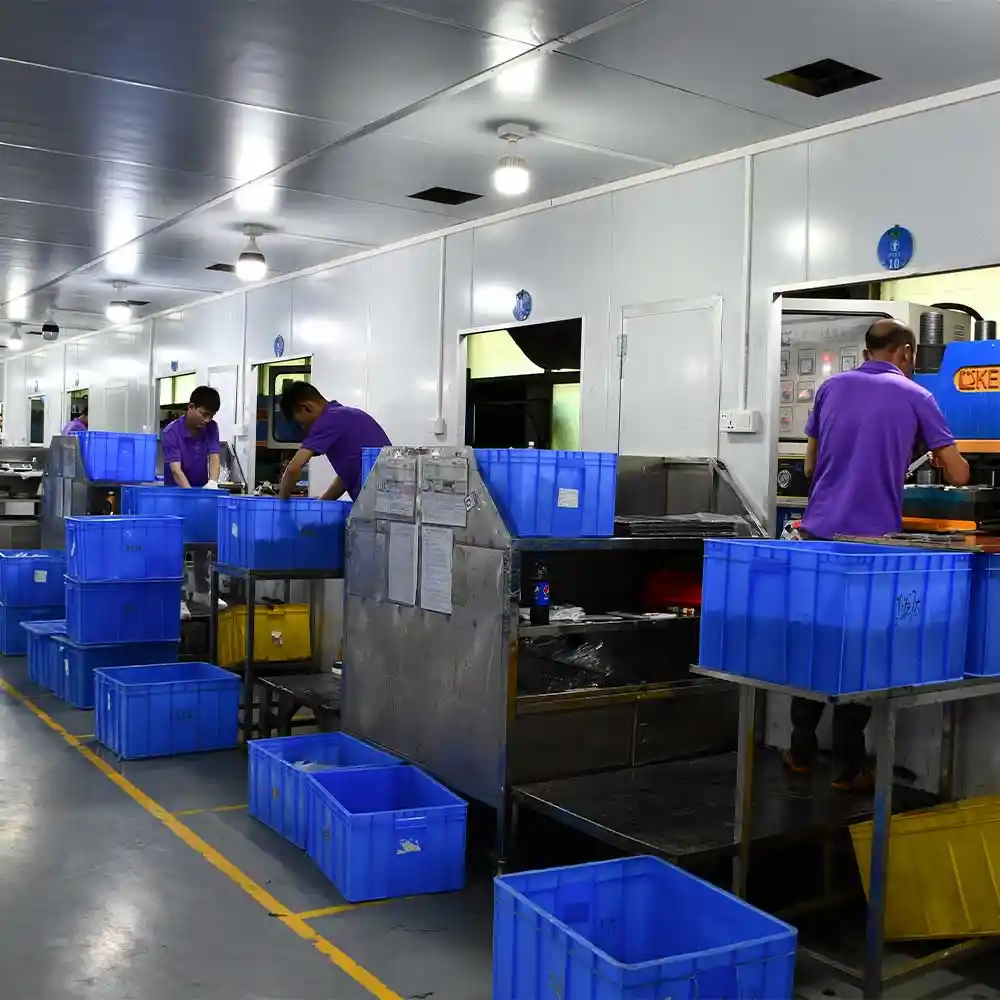
Molding Method in Clean Room
At GPMFG, we specialize in silicone molding and employ clean room techniques to produce medical-grade silicone components, mitigating the risk of impurities from minute particles such as dust. Our stringent in-process controls ensure that we consistently maintain a zero-defect level of quality in our products.
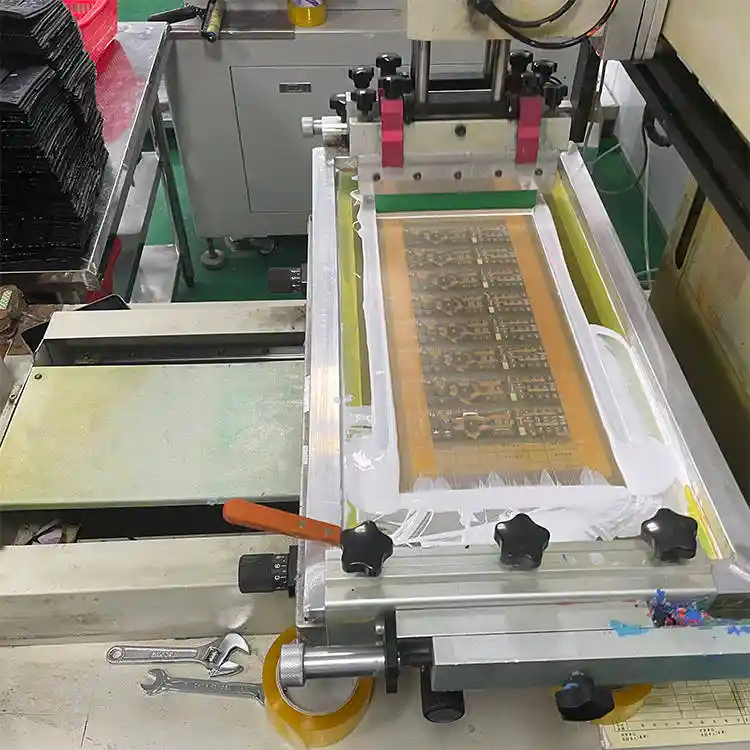
Secondary Operation
Our extensive range of secondary operations and assembly lines elevates the silicone rubber molding process to a whole new level. We provide meticulously labeled and fully assembled silicone and rubber molded parts and subassemblies, which lead to enhanced quality, efficiency, and cost-effectiveness.
Selection of materials for Silicone Rubber Molding
Choosing the right materials for silicone rubber molding is crucial to ensure high-quality, durable products. We have a wide range of options to meet your specific needs and guarantee the best results.
Silicone Rubber
Silicone rubber is a synthetic rubber that can be used in various industries, including automotive, medical, and consumer products. It is a popular material for molding due to its excellent temperature resistance and flexibility.
Advantages
High temperature resistance, good chemical resistance, excellent electrical insulation, good weatherability, resilience and flexibility, odorless and tasteless, non-toxic and biocompatible.
Disadvantages
Poor tear strength, not suitable for some oils and fuels, high compression set, high cost compared to other rubber materials.
Fluorinated Silicone Rubber
Fluorinated silicone rubber is a specialized type of silicone rubber that has superior chemical resistance and high-temperature resistance. It is often used in demanding applications such as chemical processing and aerospace.
Advantages
Excellent high-temperature resistance, superior chemical resistance, good electrical insulation, good compression set, low permeability to gases and liquids, good flame resistance.
Disadvantages
Expensive compared to other rubber materials, low tear strength and tensile strength, limited availability of grades and colors.
Nitrile Rubber
Nitrile rubber, also known as NBR, is a synthetic rubber that is resistant to oils and fuels. It is commonly used in the automotive industry for sealing and gasket applications.
Advantages
Good resistance to oils and fuels, high tensile strength, good abrasion resistance, good weatherability, good compression set.
Disadvantages
Poor resistance to ozone and sunlight, limited flexibility.
Neoprene Rubber
Neoprene rubber is a synthetic rubber that is resistant to oils, chemicals, and weather. It is often used in outdoor applications where resistance to weather and abrasion is important.
Advantages
Good resistance to oils, chemicals, and weather, good abrasion resistance, good resilience and flexibility, good flame resistance, good electrical insulation.
Disadvantages
Limited temperature range, poor resistance to ozone and sunlight, poor resistance to some solvents.
Natural Rubber
Natural rubber is a plant-based material that is commonly used in the production of tires and other automotive applications. It has good tear strength and flexibility.
Advantages
Good tear strength, good resilience and flexibility, good abrasion resistance, good electrical insulation, good low-temperature performance.
Disadvantages
Poor resistance to oils, fuels, and some chemicals, limited temperature range, poor resistance to ozone and sunlight.
EPDM Rubber
EPDM rubber is a synthetic elastomer that has excellent resistance to weathering, ozone, and UV radiation. It is available in different grades such as peroxide cured, sulfur cured, and high-temperature.
Advantages
Good weatherability, good low-temperature performance, good chemical resistance, good electrical insulation, good abrasion resistance, good ozone resistance.
Disadvantages
Poor high-temperature resistance, poor resistance to oils and fuels, poor tear strength.
Fluorine Rubber™
Fluorine rubber™, also known as FKM, is a synthetic rubber that has excellent chemical resistance and high-temperature resistance. It is often used in demanding applications such as chemical processing and oil and gas industries.
Advantages
Excellent chemical resistance, excellent high-temperature resistance, good electrical insulation, good compression set, low gas permeability.
Disadvantages
High cost compared to other rubber materials, limited color options.
Our Large Selection of Silicone Rubber Molding Post-processing
At GPMFG, we offer a wide range of post-processing options for silicone rubber molding, including surface treatments, coatings, printing, laser marking, and pad printing. We also offer secondary operations such as component assembly and testing to complete the full production process. Our post-processing options provide customers with personalized solutions that meet their unique product needs and specifications while ensuring that the final product meets strict quality standards.
Pad printing
Pad printing is a popular printing technique used to transfer 2D images onto 3D objects via a silicone rubber pad. Silicone rubber molding is the process of creating a custom-made silicone rubber pad that makes contact with the printing plate and transfers the image to the desired substrate.
Burnishing
Burnishing is a finishing technique used on silicone rubber molds to smooth and polish the surface. This process involves using a smooth and hard object, such as a burnishing tool, to rub and compress the surface of the mold to create a glossy and uniform finish.
Painting
Painting in silicone rubber molding is a service that allows our clients to add vibrant color to their rubber components. After molding and curing, the silicone parts are painted with a custom color or design of choice using specialized paints and techniques. This service is ideal for creating distinctive, eye-catching rubber components that stand out from the rest.
Bonding
Bonding is a technique commonly used in silicone rubber molding to join two separate components together. This process involves applying a layer of adhesive material to both surfaces and then pressing them together to create a strong bond. Bonding is especially useful when creating complex components that require multiple parts to be joined together.
Why choose GPMFG as your preferred Silicone Rubber Molding service provider
As your preferred silicone molding provider, we offer value-added services including prototyping, cleanroom assembly, multi-material/multi-shot molding. Unique chromatography product design enhances purification, while LSR capabilities enable cost-friendly manufacturing of quality medical silicone parts. Rigorous quality processes and micro mold plastic selection allow custom solutions, guaranteed quality products, and short lead times.
- Value-added services: Prototyping, mold-making, packaging, and multi-material molding.
- Process chromatography: Efficient purification process and bioprocessing applications.
- Competitive prices: Advanced molding technology and multi-component production.
- Custom solutions: Design verification, mold design, and prototyping.
- Guaranteed quality: Low defect rates and high-quality materials and methods.
- Short lead time: High-power vision system for quick and efficient production.
Professional Silicone Rubber Molding Services To Make You Worry-Free
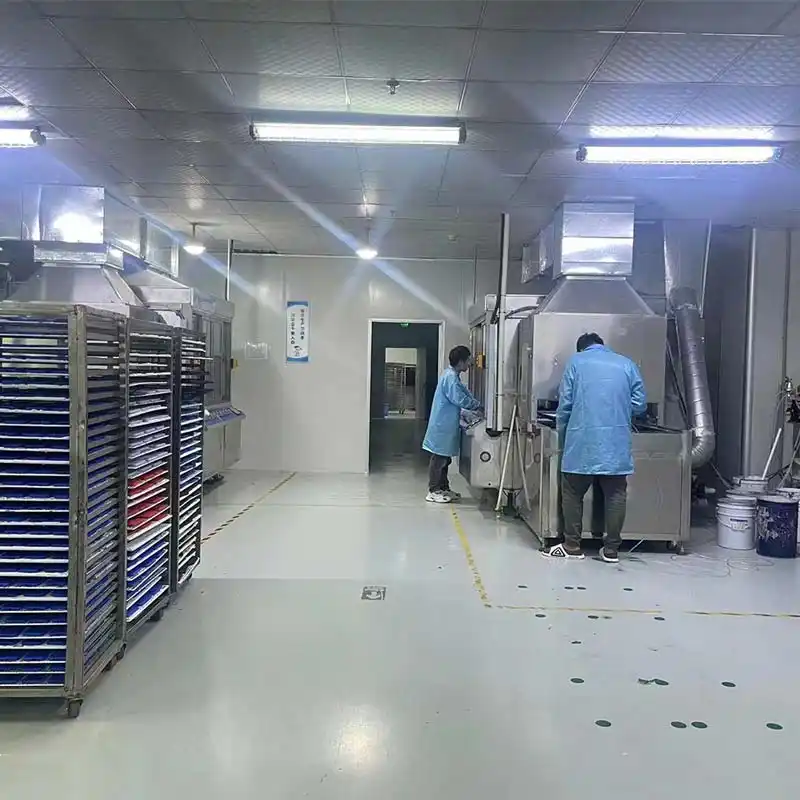
20+ people design & technology team
With an average of more than 15 years of experience in die casting technology, our team can handle any sophisticated design and provide a feasible solution that exceeds expectations.
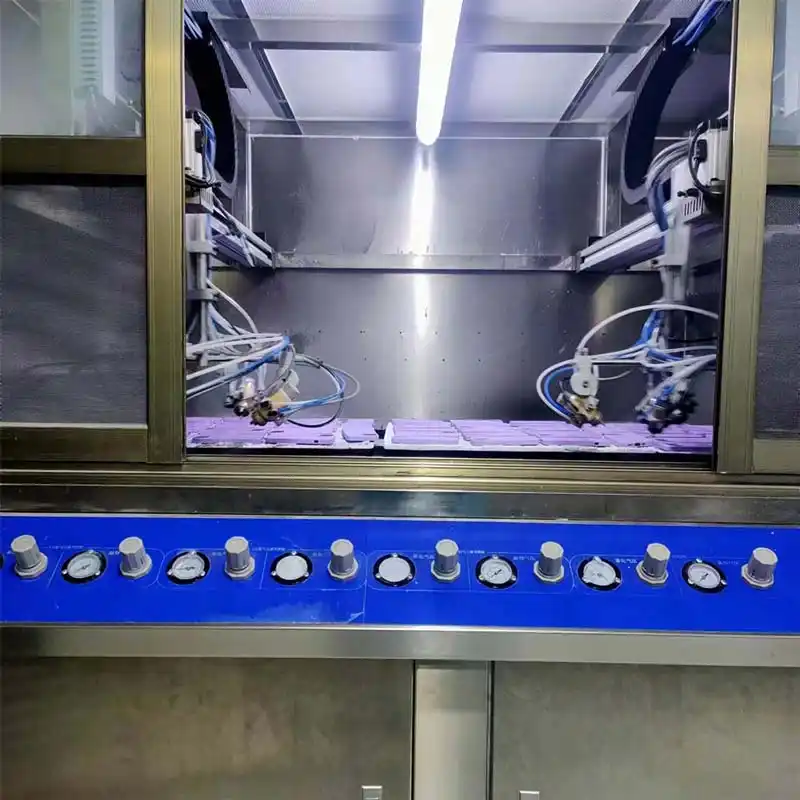
Advanced Silicone Molding technology
Our advanced silicone molding technology allows us to easily handle projects of all sizes and complexities with a tolerance of ±0.005mm.
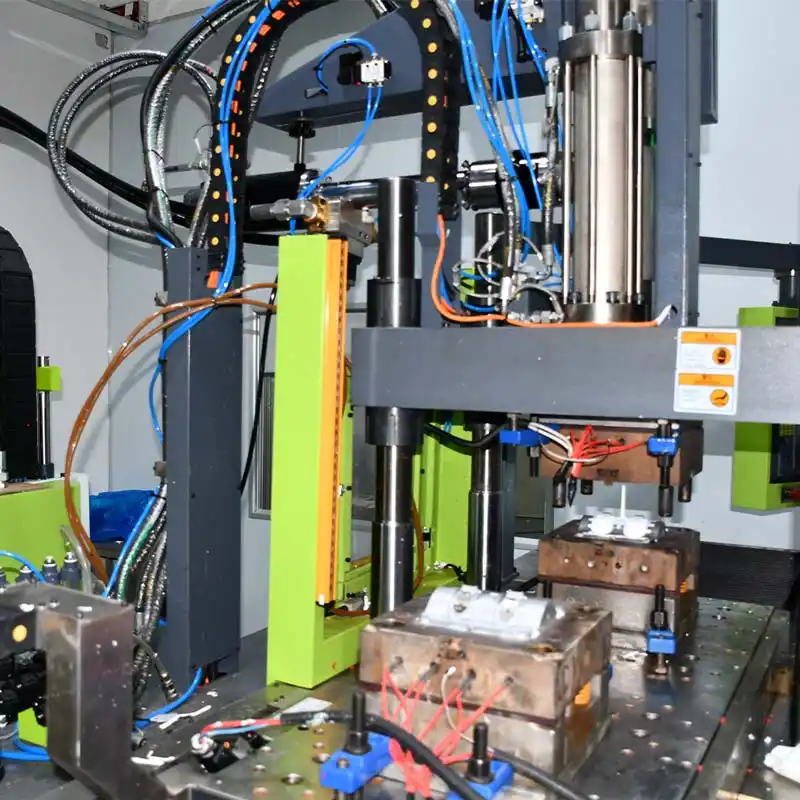
Free of Flash
Flash is removed during high precision production and strict quality control tests, ensuring our silicone molded parts meet flash tolerances between 0mm and 0.03mm.
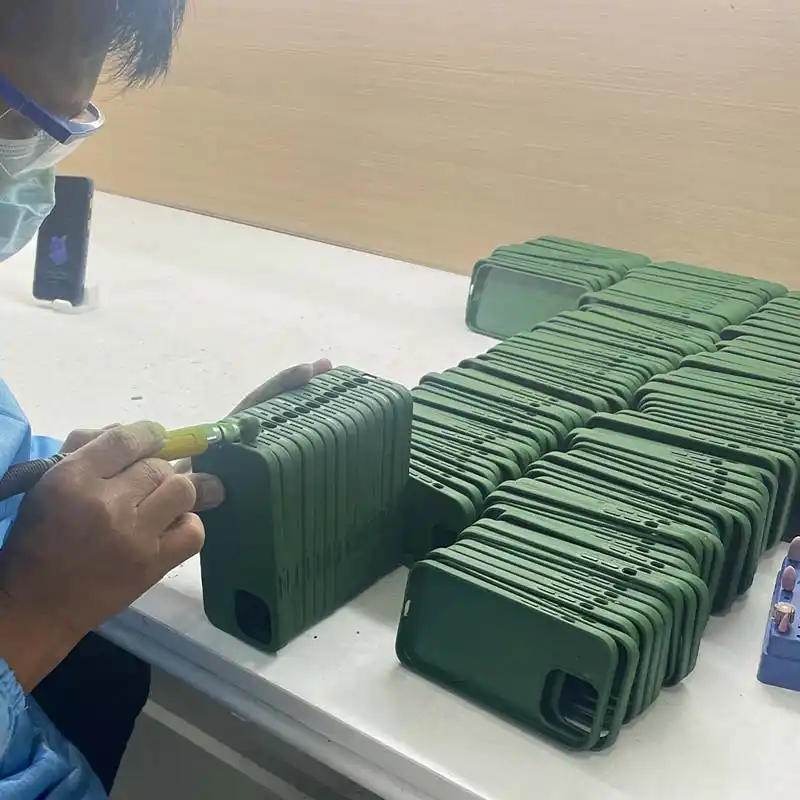
Cost-competitive manufacturing
Our cost-competitive manufacturing services are enabled by employing optimized DFM standards for efficient and affordable production.
Facilitate On-Demand Manufacturing for Quicker and Simpler Results.
Once you are prepared to commence your upcoming venture, you can effortlessly upload your 2D/3D CAD design files and our team of engineers will promptly provide you with a quotation within 24 hours.
- 10 to 500,000 parts available
- Save 50-70% costs
- 40% reduction in delivery time
Jacob Deng
- jacob@gainpower-mfg.com
- +86 132 1516 3182
Address
-
NO 1,HengZeng road,XinAn community,ChangAn town,
DongGuan City,GuangDong,China(Post code:523882)
- What Is Silicone Compression Molding?
- What is the temperature of silicone molding?
- What are the advantages and disadvantages of die casting?
- What are the Disadvantages of silicone rubber compression molding?
- What are the types of silicone rubber compression molds?
- How Much Does Silicone Compression Molding Cost?
- What Are The Other Material Options Available For Compression Molding?
- What Are The Manufacturing And Quality Standards For Silicone Compression Molding?
- Silicone Compression Molding vs Silicone Injection Molding
- What Is Liquid Silicone Rubber Injection Molding?
- What Are The Types Of Liquid Silicone Rubbers?
- What Are The Characteristics Of Liquid Silicone Rubber?
- How Much Does The Liquid Silicone Rubber Injection Cost?
- What Are The Important Considerations In Liquid Injection Molded Design?
- What Are The Quality Standards Of Liquid Silicone Rubber Injections Molding?
- What Are The Quality Standards Of Liquid Silicone Rubber Injections Molding?
- Are Chinese Silicone Compression Molding Service Different From European Services?
Silicone Rubber Molding Guide - Frequently Asked Questions
1.What Is Silicone Compression Molding?
Silicone compression molding is a manufacturing process that involves placing a measured amount of uncured silicone rubber material into a mold cavity. The mold is then closed, and pressure is applied to the material to distribute it evenly throughout the mold cavity. The mold is heated, allowing the silicone to cure and set into the desired shape.
Once the curing process is complete, the mold is opened, and the newly formed silicone product is removed. This method is similar to making waffles in a waffle maker. Silicone compression molding is a proven method for manufacturing silicone parts and can produce parts ranging in size from 0.024 inches to 30 inches in diameter.
2. What is the temperature of silicone molding?
The temperature of silicone molding in the average compression molding process is 350°F (180°C). This process also involves a mold pressure of 100 psi (700 kPa) and a cure time of 3 minutes. Compression molding is a cost-effective method that can produce large quantities of silicone parts.
3. What are the advantages of silicone rubber compression molding?
Raw material loss during compression molding is minimal, usually ranging from 2% to 5%, resulting in little product loss.
Compression molding produces end products with low internal stress and minimal warping deformation. Additionally, the mechanical properties of the products are stable.
The mold cavity’s lifespan is short, resulting in low maintenance costs. Furthermore, molding equipment is less expensive, and the mold structure is simpler. As a result, multiple cavities can be produced at a lower cost than injection molding.
Compression molding is well-suited for producing large, flat products. The size of the products that can be produced is determined by the mold clamping force of the mold pressing machine and the size of the mold plate.
If parts are required in batches, compression molding is a cost-effective option.
Molds with a high number of cavities can be placed on a single plate to increase productivity.
4. What are the Disadvantages of silicone rubber compression molding?
- The molding cycle is inefficient and time-consuming, taking between 1-6 minutes to start and repeat the process.
- Complex products with depressions, side slopes, or small holes are not recommended for molding with this method.
- Any burrs that occur will need to be manually trimmed, reducing productivity, increasing labor costs, and creating material waste.
- Compression molding is a complex manufacturing process that requires a significant investment.
- The compression machine is only suitable for mass production of small and medium composite products.
5. What are the types of silicone rubber compression molds?
Compression molding can be categorized into four types based on mold structure. These types are:
Two Basic Plates Mold: This is the most common and simple rubber compression mold. It is suitable for creating rubber parts like silicone o rings or flat nitrile rubber gaskets.
Basic Plates With Middle Part: For rubber products with small undercuts like rubber grommet seals, this mold is suitable.
Two Basic Plates With Mold Core: This mold is appropriate for producing products with deep undercuts and cylinder-shaped rubber parts, such as silicone bottle sleeves.
Basic Mold Plate With Sliders: This method is useful for creating complex silicone rubber parts with deep undercuts or hollow cylinder shapes.
6. How Much Does Silicone Compression Molding Cost?
When it comes to silicone compression molding, a basic prototype for producing simple parts such as a grommet typically costs between $800 and $1600. However, opting for a multi-cavity mold can significantly increase production efficiency. A 6-cavity mold, for example, can produce 40 to 50 parts per hour, while a mold with more cavities can further reduce unit costs to below $5.
7. What Are The Other Material Options Available For Compression Molding?
Rubber: Compression molding is commonly used to manufacture rubber products such as gaskets, seals, and O-rings.
Silicone: Silicone is a flexible, rubber-like material that is often used in compression molding applications where flexibility and durability are required. It is commonly used in the production of seals, gaskets, and other soft components.
Phenolic: Phenolic resins are synthetic thermosetting polymers that offer excellent mechanical, thermal, and electrical properties. They are commonly used in applications that require high strength and stiffness, such as in brake pads and electrical switches.
Polyester: Polyester resins are a type of thermosetting polymer that are commonly used in compression molding applications. They offer good mechanical properties, are resistant to chemicals and heat, and can be easily pigmented.
Urea-formaldehyde: Urea-formaldehyde is a thermosetting plastic that is used for a variety of applications including electrical components, automotive parts, and consumer products.
Bakelite: Bakelite is a type of thermosetting plastic that was first used in the early 20th century. It is still used today for a variety of applications including electrical insulators, automotive parts, and appliance handles.
Epoxy: Epoxy resins are a popular material for compression molding due to their excellent mechanical properties, high strength, and resistance to chemicals and heat. They are commonly used in aerospace, automotive, and electrical applications.
Polyurethane: Polyurethane is a versatile material that can be used in a variety of compression molding applications. It is commonly used in automotive and industrial applications where high strength and durability are required.
BMC (Bulk Molding Compound): BMC is a thermoset material that is made by combining chopped glass fibers, resin, and other additives. It is commonly used in automotive and electrical applications due to its high strength, dimensional stability, and resistance to heat and chemicals.
SMC (Sheet Molding Compound): SMC is a composite material that is made by combining chopped glass fibers, resin, and other additives. It is commonly used in automotive, aerospace, and industrial applications due to its high strength, low weight, and excellent dimensional stability.
8. What Are The Manufacturing And Quality Standards For Silicone Compression Molding?
Manufacturing and quality standards for silicone compression molding in China are held to stringent guidelines to ensure top-notch performance and reliability. These guidelines include:
RMA Class A: This standard establishes tolerances for O-rings, which are essential components of many industrial applications.
ISO3601-1: This standard specifies tolerances for O-rings used in fluid power systems.
Rubber Manufacturers Association, RMA-A2: This standard outlines specific test procedures for evaluating rubber properties, such as hardness and tensile strength.
ISO 3601-3: This standard defines tolerances for O-rings in static applications, as well as tolerances for those used in dynamic applications.
When it comes to meeting these exacting standards, GP MFG stands out as one of the best manufacturers of silicone compression molding in China. Thanks to their commitment to quality and precision, you can trust GP MFG to deliver top-of-the-line products that meet your exact specifications. So if you’re looking for high-quality silicone compression molding, look no further than GP MFG.
9. Silicone Compression Molding vs Silicone Injection Molding
Silicone compression molding and silicone injection molding differ in several aspects, including product size, production time, quantity, quality, and shape of the final products. Here’s a closer look at each:
- Product size: Compression molding is ideal for large silicone products, while injection molding is better suited for smaller parts with high tolerances. Compression molding can produce products with wall thicknesses ranging from 1.3 mm to one inch.
- Production time: Compression molding takes longer than injection molding, and excess flesh around parts must be trimmed manually, making it a more labor-intensive process. Injection molding is automated, which makes it more efficient.
- Quantity: Injection molding is better for high-quantity production, thanks to its automated process and short cycle time. Compression molding is more suitable for low to medium series of large products.
- Quality: If strength is important, injection molding is the way to go.
- Shape of final products: Compression molding typically produces simple shapes that are cut from silicone, while injection molding allows for more complex parts, including cones, with varying degrees of wall thickness and multiple shapes.
10. What Is Liquid Silicone Rubber Injection Molding?
Liquid silicone rubber (LSR) injection molding is a manufacturing technique that involves the simultaneous cooling of the material delivery system and heating of the mold tool to cure silicone materials into parts.
This approach is ideal for the production of large quantities of flexible and durable parts, as well as parts with intricate geometries and over-molded features.
In comparison to compression molding, LSR injection molding has a shorter curing time, which increases the efficiency of the manufacturing process.
This method enables the creation of complex shapes that would be difficult to achieve using other molding techniques, making it an excellent choice for applications that require high precision and intricate details.
11. What Are The Types Of Liquid Silicone Rubbers?
Liquid silicone rubber (LSR) is a versatile material that can be customized for various applications. The types of LSRs can be broadly categorized based on their curing systems, viscosity, and processing methods. Here are some common types of LSRs:
Platinum-Cured LSR: This type of LSR uses a platinum catalyst as a curing agent. It offers several advantages such as excellent transparency, high tear strength, and good biocompatibility. It is widely used in medical, food-grade, and consumer products.
Peroxide-Cured LSR: This type of LSR uses a peroxide curing agent. It offers good heat resistance, chemical resistance, and mechanical properties. It is commonly used in automotive, aerospace, and industrial applications.
High Viscosity LSR: This type of LSR has a high molecular weight and high viscosity, making it suitable for injection molding and extrusion. It offers excellent mechanical properties and is often used in automotive and aerospace applications.
Low Viscosity LSR: This type of LSR has a low molecular weight and low viscosity, making it suitable for liquid injection molding and overmolding. It offers fast curing and good flow properties, making it ideal for complex geometries and thin-walled parts.
Heat Cured LSR: This type of LSR is cured at high temperatures, making it suitable for high-temperature applications. It offers excellent thermal stability and mechanical properties and is commonly used in aerospace and automotive applications.
12.What Are The Characteristics Of Liquid Silicone Rubber?
Temperature resistance: LSR can withstand high temperatures without degrading or losing its properties. It can withstand temperatures ranging from -60°C to 300°C.
Flexibility: LSR is highly flexible and can be used in applications where there is a need for high flexibility and stretchability.
Chemical resistance: LSR has excellent resistance to many chemicals, including solvents, acids, and bases.
Biocompatibility: LSR is biocompatible, meaning that it can be used in applications where it comes in contact with living tissue without causing harm.
High tear strength: LSR has high tear strength, making it suitable for use in applications where there is a risk of tearing or damage.
Electrical insulation: LSR is an excellent electrical insulator, making it useful in applications where electrical insulation is required.
Resistance to aging and weathering: LSR is resistant to aging and weathering, making it suitable for use in outdoor applications.
Low compression set: LSR has a low compression set, meaning that it can withstand compressive forces without losing its shape or properties.
13. How Much Does The Liquid Silicone Rubber Injection Cost?
The cost of tooling is influenced by the size and level of detail required for the parts being produced. For instance, a mold designed to produce a 4″ x 6″ seal with a .062″ diameter O-ring cross-section may range from $1500 for a single cavity mold to $2000 for a double cavity silicone injection mold.
On the other hand, a mold with a complex gasket design that includes undercuts and intricate geometry may cost significantly more, with single cavity molds costing anywhere from $6000 to $7500. Thus, the complexity of the parts being produced is a critical factor to consider when determining tooling costs.
14. What Are The Important Considerations In Liquid Injection Molded Design?
Liquid injection molded designs require careful consideration to ensure perfect output. These considerations can be broken down into several subpoints:
- Part Size
Maximum mold area of 17.6 square inches (113.55 sq cm)
Maximum part size of 5 inches-by-5 inches-by-2 inches (127-mm-into-127-mm-into-50mm)
Maximum part volume of 4 cubic inches (65.55 cc)
Parts should be no deeper than 2 inches from any parting line - Wall Thicknesses
Liquid Silicone Rubber can fill thin wall sections, with a minimum recommended thickness of 0.010 in. (0.25 mm.)
Recommended rib thickness is 0.5 to 1.0 times the adjacent wall’s thickness - Mass Reduction and Uniform Wall Thickness
LSR allows for uniform wall thickness and mass reduction, improving the design - Parting Lines
Limit parting lines for cleaner parts and faster production cycles - Undermines
Addressing undermines is critical for LSR forming, but they can be eliminated with minimal effort - Part Removal
LSR moldings don’t require ejector pins for part removal, making the process simpler - Draft
LSR parts require draft, with zero draft for shallow parts and 1-degree draft per inch (25.4mm.) for deeper parts - Venting
LSR parts require minimal venting compared to injection-molded parts, with entryways or vents necessary even in the thickest cross-part of any part - Tolerances
A straight tolerance of 0.025 in/in (0.025 mm/mm) is standard for planned LSR parts, with streak remittance considerations necessary.
15. What Are The Quality Standards Of Liquid Silicone Rubber Injections Molding?
These are the quality benchmarks established for liquid silicone rubber injection molding:
LSR adheres to various quality programs such as IATF 16949:2016, ISO 123485:2016, ISO 13485:2016NS-EN, and ISO 9001:2015.
GP MFG company conforms to all these quality standards in order to create the highest quality Liquid Silicone Rubber available in the market. They are recognized as the leading manufacturer in China and have established partnerships with international customers to offer premium quality LSR at wholesale prices.
16. What Are The Quality Standards Of Liquid Silicone Rubber Injections Molding?
LSR (Liquid Silicone Rubber) can be used to produce a wide variety of parts with different properties and characteristics.
Seals and Gaskets: LSR is an ideal material for seals and gaskets due to its excellent sealing properties, flexibility, and resistance to high temperatures.
Medical Devices: LSR is widely used in medical devices due to its biocompatibility, sterility, and ability to withstand repeated sterilization.
Consumer Electronics: LSR is used to produce a variety of components for consumer electronics such as buttons, keypads, and protective covers due to its durability, resistance to water, and other environmental factors.
Automotive Parts: LSR is used in the production of automotive parts such as gaskets, seals, and hoses due to its excellent resistance to heat, oil, and other automotive fluids.
Industrial Parts: LSR is used to produce industrial parts such as gaskets, O-rings, and other components due to its high strength, chemical resistance, and ability to withstand extreme temperatures.
Household Products: LSR is used in the production of a variety of household products such as kitchen utensils, baby bottle nipples, and pacifiers due to its durability, flexibility, and ease of cleaning.
17. Are Chinese Silicone Rubber Molding Service Different From European Services?
Chinese silicone rubber molding services provide more benefits compared to European services due to their cheaper prices without sacrificing quality and customer satisfaction. In fact, Chinese manufacturers currently dominate the global market for silicone rubber molding, accounting for 75% of the industry.
The key to the success of Chinese manufacturers, such as GP MFG, is their ability to keep a close eye on market trends and deliver top-notch molding services. This is what sets their silicone compression molding services apart from their European counterparts.


